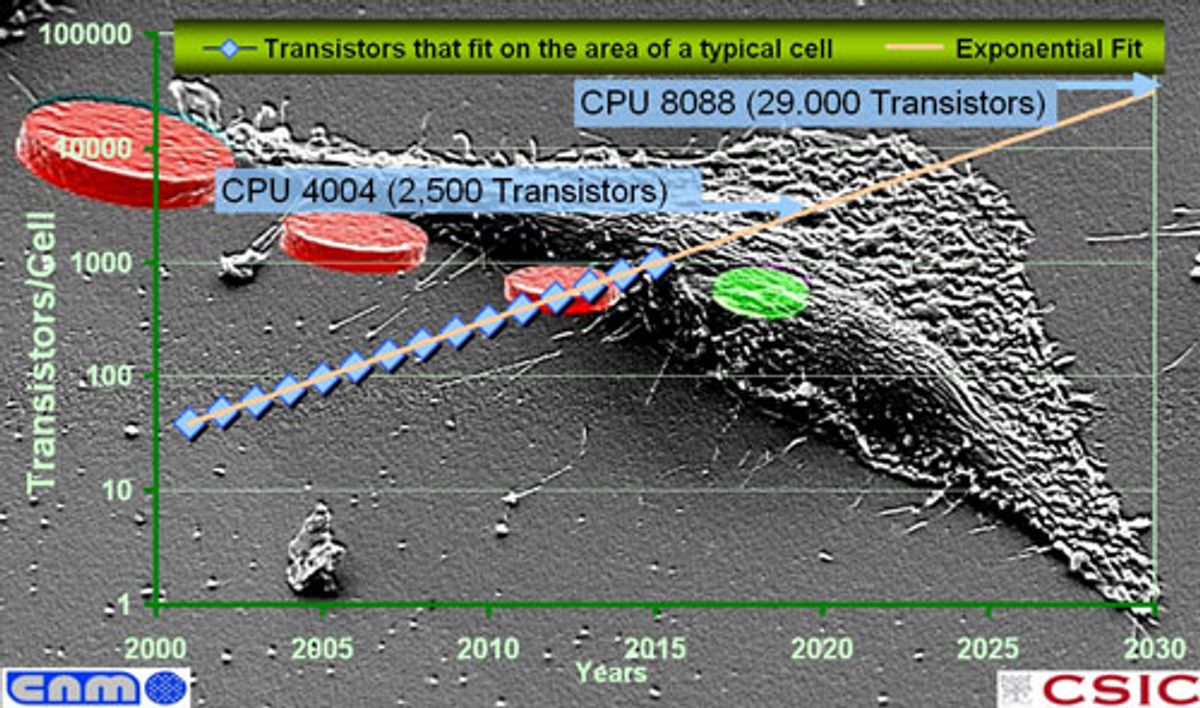In a report in Nanowerk, Researchers at the Micro and Nanosystems Department, Instituto de Microelectrónica de Barcelona IMB-CNM (CSIC), led by José Antonio Plaza have successfully implanted silicon chips into living cells and manage to keep the cells alive for seven days. The research was originally published in the Wiley journal, Small.
The aim of the work was to demonstrate how our ability to create 3D-structred silicon chips on the scale of nanoparticles could enable intracellular sensors. Of course, this is a preliminary step to such possibilities since the cells were not integrated into a larger living organism in which we might see phagocytes attack the chip-impregnated cells, for instance. Or how the chips might actually transmit to an outside receiver the data it had collected inside the cell. But as we said this is a preliminary step. An interesting point raised in the Nanowerk article is that at the current trajectory of miniaturization of silicon chips it could become possible to integrate as many as 2,500 transistors into a cell by 2020, which is roughly the equivalent to the number of transistors contained in the microprocessors of the first generation of personal computers.
While the main application for these intracellular chips would be disease detection, according to the researchers, one wonders whether the data the chips are collecting on the viability of the cell they are within is being caused by some outside diseased cells or the very presence of the chip themselves.
Based on the preliminary nature of the research, the researchers might set their sights a little higher and estimate the number of transistors that might fit in a cell by 2050.Dexter Johnson
Dexter Johnson is a contributing editor at IEEE Spectrum, with a focus on nanotechnology.
The Conversation (0)




